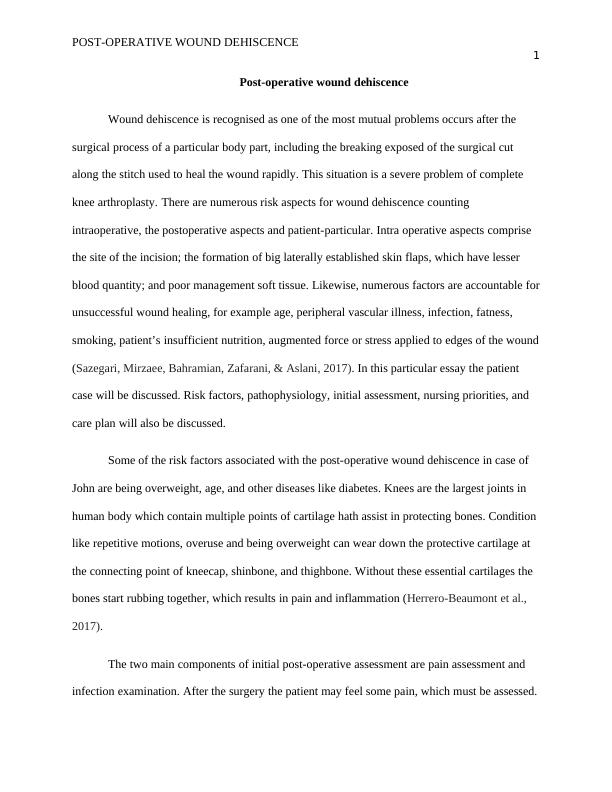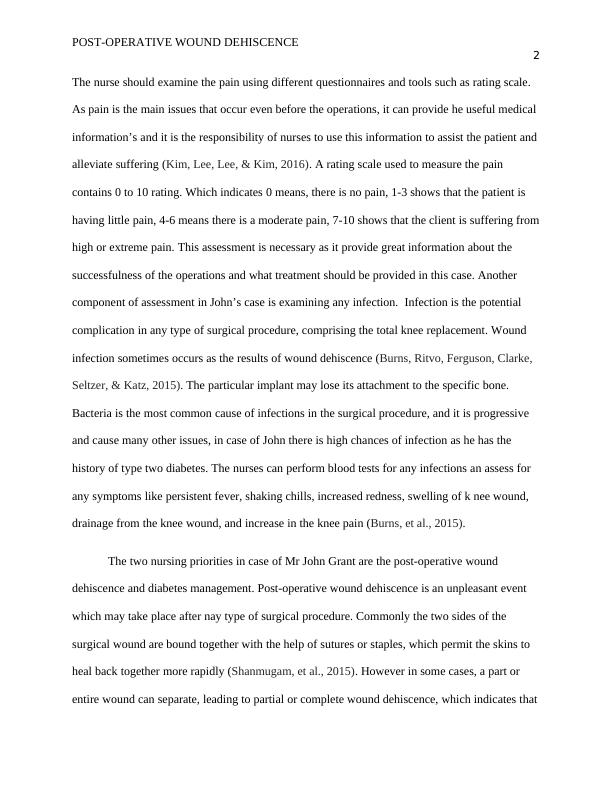Post-Operative Wound Dehiscence: Risk Factors, Assessment, and Nursing Priorities
Write a 1500 word essay discussing the assessment of a post-operative client and develop a comprehensive care plan to address nursing care priorities
8 Pages2251 Words1 Views
Added on 2022-12-23
About This Document
This essay discusses the risk factors, pathophysiology, initial assessment, nursing priorities, and care plan for post-operative wound dehiscence. It explores the case of a patient with risk factors such as being overweight and having diabetes. The nursing priorities include managing the wound dehiscence and diabetes. The care plan involves wound assessment, setting goals, implementing interventions, and evaluating outcomes. The essay provides insights into the management of this common complication after surgery.
Post-Operative Wound Dehiscence: Risk Factors, Assessment, and Nursing Priorities
Write a 1500 word essay discussing the assessment of a post-operative client and develop a comprehensive care plan to address nursing care priorities
Added on 2022-12-23
ShareRelated Documents
End of preview
Want to access all the pages? Upload your documents or become a member.
Post-operative Wound Dehiscence: Risk Factors, Assessment, and Nursing Priorities
|8
|2236
|34
Acute Care Nursing: Pain Assessment and Wound Care in Knee Replacement Surgery
|11
|2240
|333
Bilateral Knee Osteoarthritis: Pathophysiology, Treatment, and Nursing Interventions
|11
|2314
|26
Nursing Assignment: Wound Infection and Pain Management
|17
|3969
|50
Nursing Assignment: Case Study of Bilateral Knee Osteoarthritis
|10
|2715
|396
Nursing of Surgical Patient Article 2022
|9
|2574
|28



